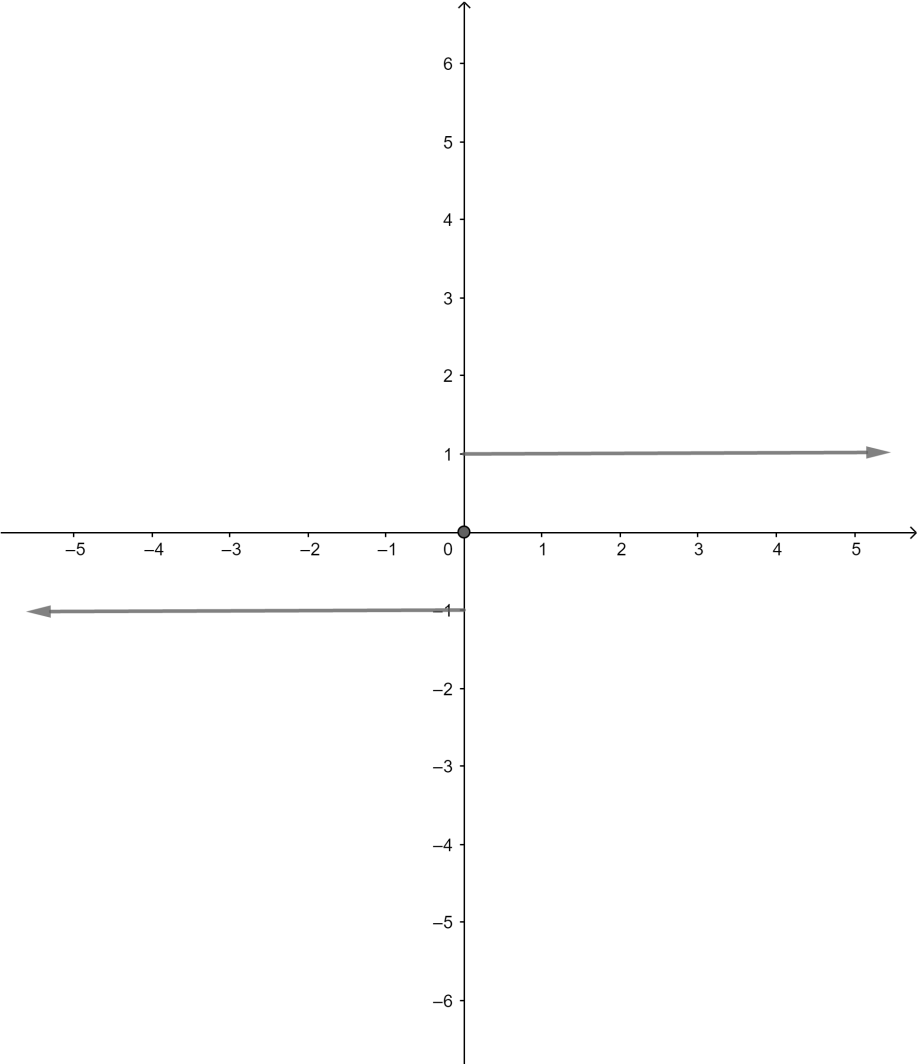
The range of f(x)=sgn(x) is:
A. [-1,1]
B. {-1,0,1}
C. {-1}
D. {1}
Answer
558k+ views
Hint: Here, we have to tell the range of the function f(x)=sgn(x). For this, we will first define sgn(x). It is the signum function on x whose definition is given as $sgn \left( x \right)=\left\{ \begin{align}
& 1,\ \ x>0 \\
& 0,\ \ x=0 \\
& -1,\ \ x<0 \\
\end{align} \right.$. Now that we know the definition of the function, we can see what values the function will take for different values of x, and hence we will get the range of the required function. Thus, we will get the answer.
Complete step-by-step solution
Here, we have to tell the range of f(x)=sgn(x).
Now, we know that sgn(x) means signum function on x and we also know that it is defined as:
$sgn \left( x \right)=\left\{ \begin{align}
& 1,\ \ x>0 \\
& 0,\ \ x=0 \\
& -1,\ \ x<0 \\
\end{align} \right.$
Now, from the definition of the function, we can see that the function will give the value as 1 for all the positive values of x, the value as 0 for x=0 and the value as -1 for all negative values of x.
Hence, the signum function gives only three value values, which are -1, 0, and 1.
Hence, the range of the function f(x)=sgn(x) is {-1,0,1}.
Thus, option (B) is the correct option.
Note: If there is any confusion finding the range of the function, we can take the help of the graph of the function. The graph of a signum function is given as:

From the graph, we can clearly see that the range of f(x)=sgn(x) is {-1,0,1}.
& 1,\ \ x>0 \\
& 0,\ \ x=0 \\
& -1,\ \ x<0 \\
\end{align} \right.$. Now that we know the definition of the function, we can see what values the function will take for different values of x, and hence we will get the range of the required function. Thus, we will get the answer.
Complete step-by-step solution
Here, we have to tell the range of f(x)=sgn(x).
Now, we know that sgn(x) means signum function on x and we also know that it is defined as:
$sgn \left( x \right)=\left\{ \begin{align}
& 1,\ \ x>0 \\
& 0,\ \ x=0 \\
& -1,\ \ x<0 \\
\end{align} \right.$
Now, from the definition of the function, we can see that the function will give the value as 1 for all the positive values of x, the value as 0 for x=0 and the value as -1 for all negative values of x.
Hence, the signum function gives only three value values, which are -1, 0, and 1.
Hence, the range of the function f(x)=sgn(x) is {-1,0,1}.
Thus, option (B) is the correct option.
Note: If there is any confusion finding the range of the function, we can take the help of the graph of the function. The graph of a signum function is given as:

From the graph, we can clearly see that the range of f(x)=sgn(x) is {-1,0,1}.
Recently Updated Pages
Master Class 12 English: Engaging Questions & Answers for Success

Master Class 12 Business Studies: Engaging Questions & Answers for Success

Master Class 12 Economics: Engaging Questions & Answers for Success

Master Class 12 Social Science: Engaging Questions & Answers for Success

Master Class 12 Maths: Engaging Questions & Answers for Success

Master Class 12 Chemistry: Engaging Questions & Answers for Success

Trending doubts
What are the major means of transport Explain each class 12 social science CBSE

Which are the Top 10 Largest Countries of the World?

Draw a labelled sketch of the human eye class 12 physics CBSE

Explain sex determination in humans with line diag class 12 biology CBSE

The pH of the pancreatic juice is A 64 B 86 C 120 D class 12 biology CBSE

Explain sex determination in humans with the help of class 12 biology CBSE




